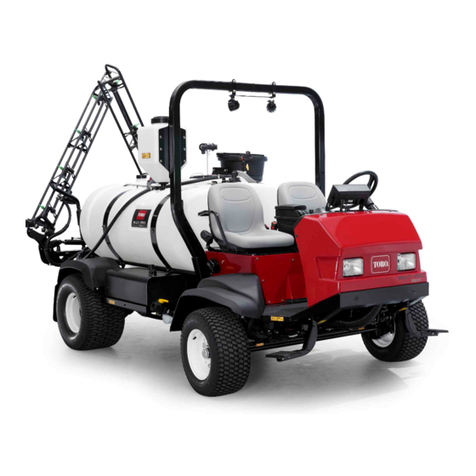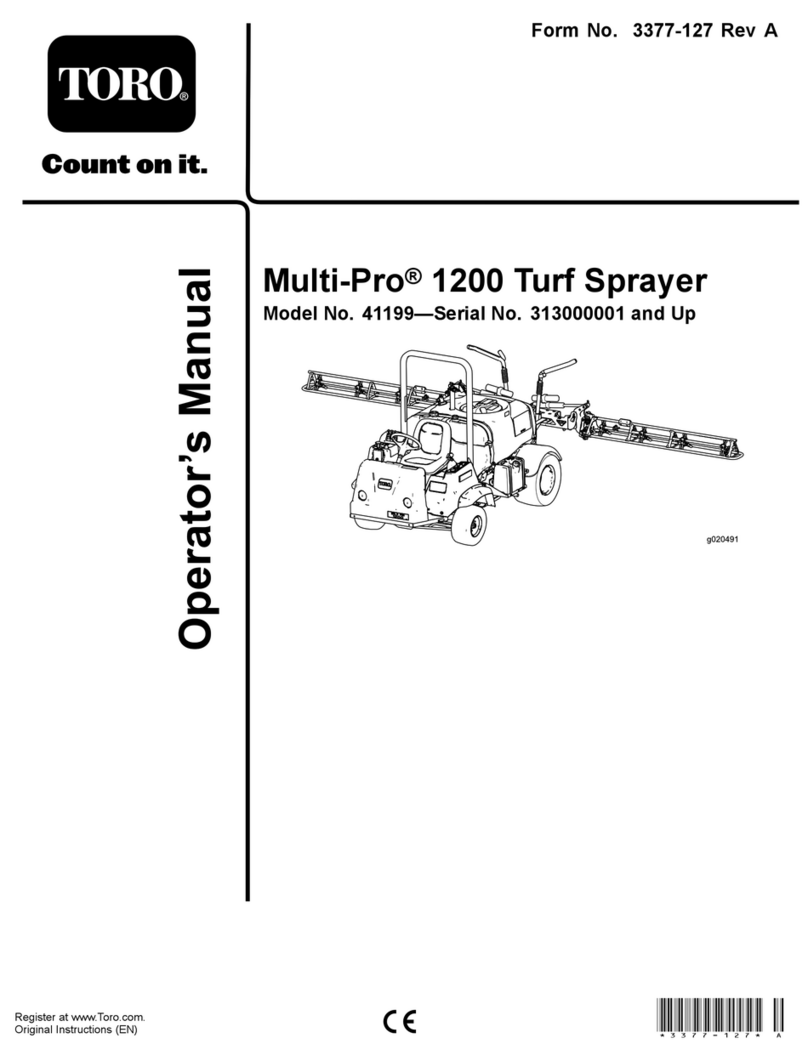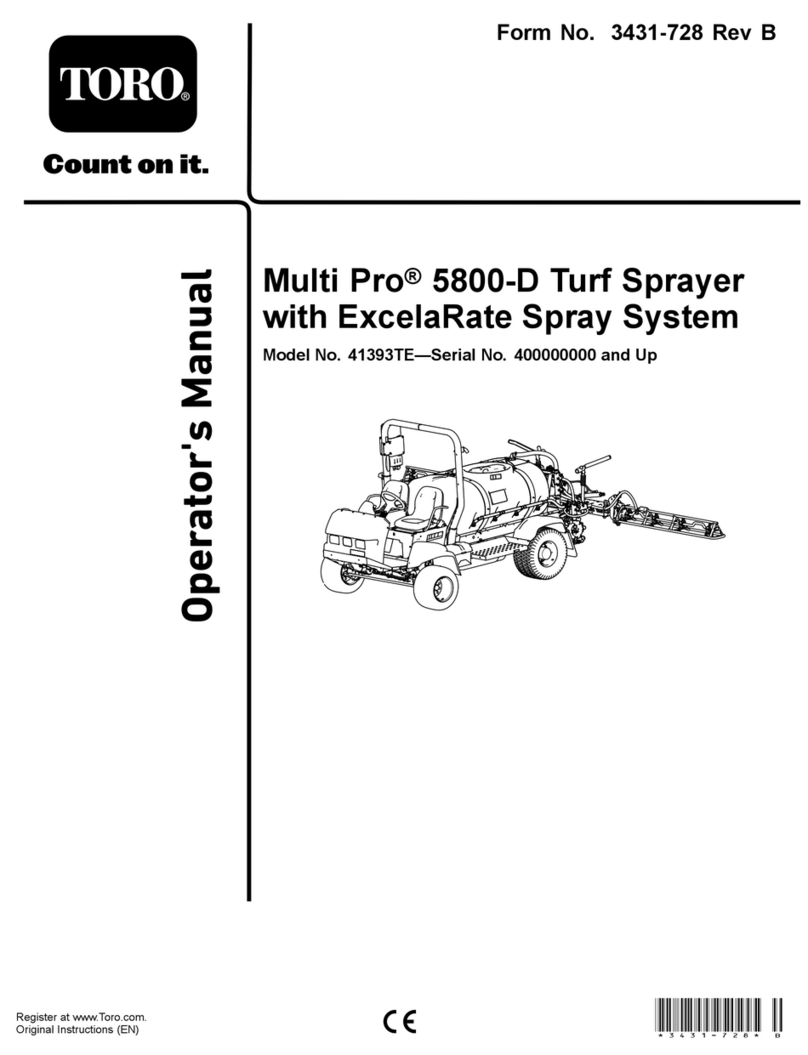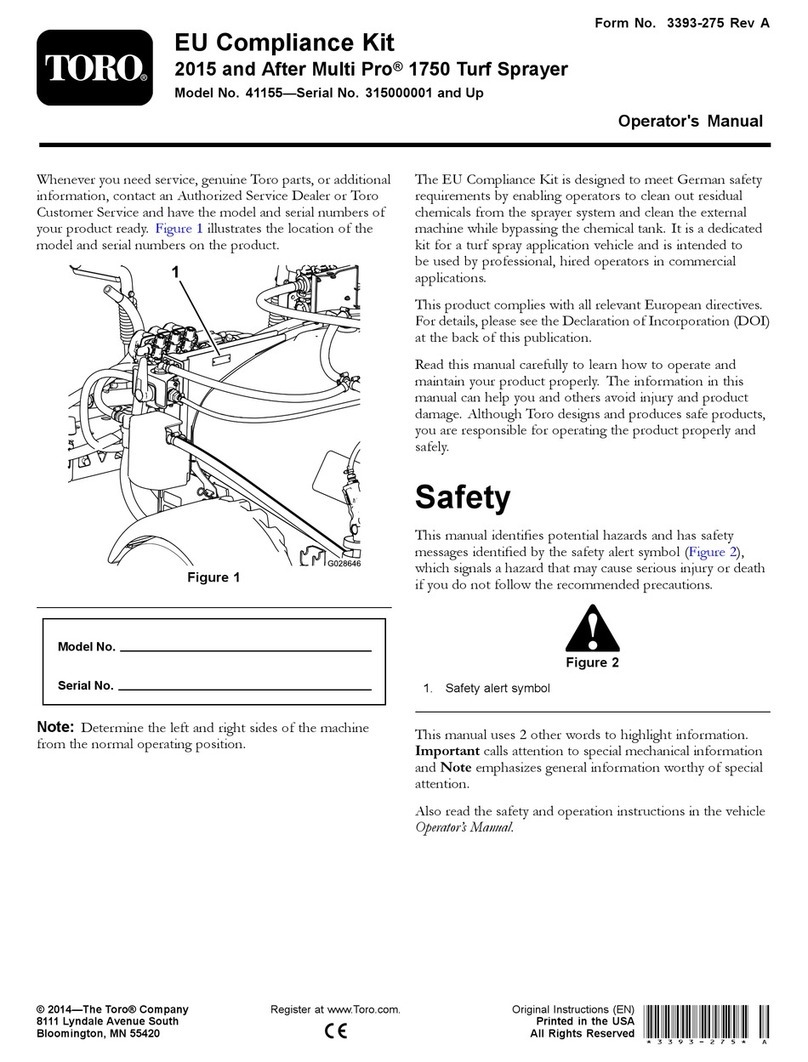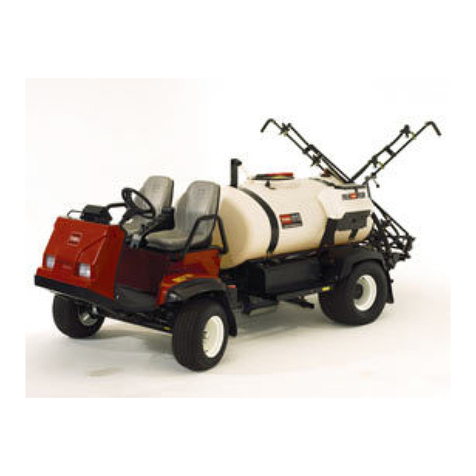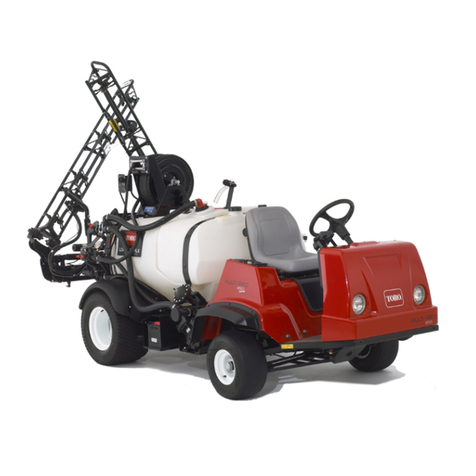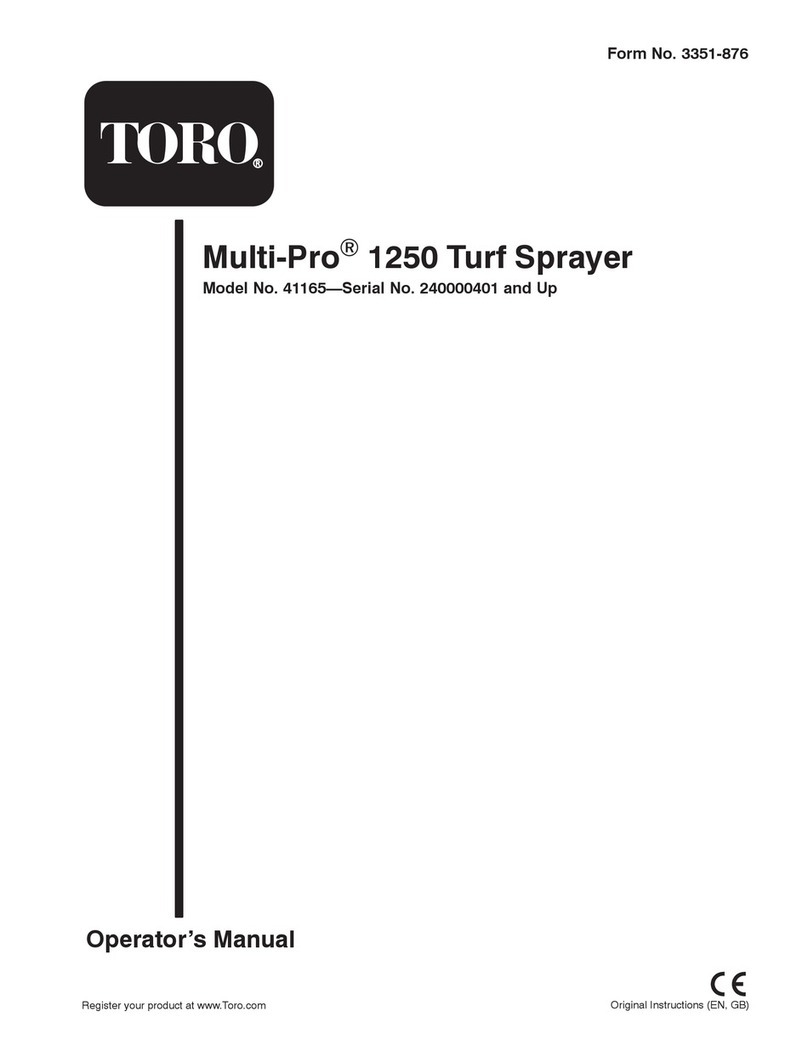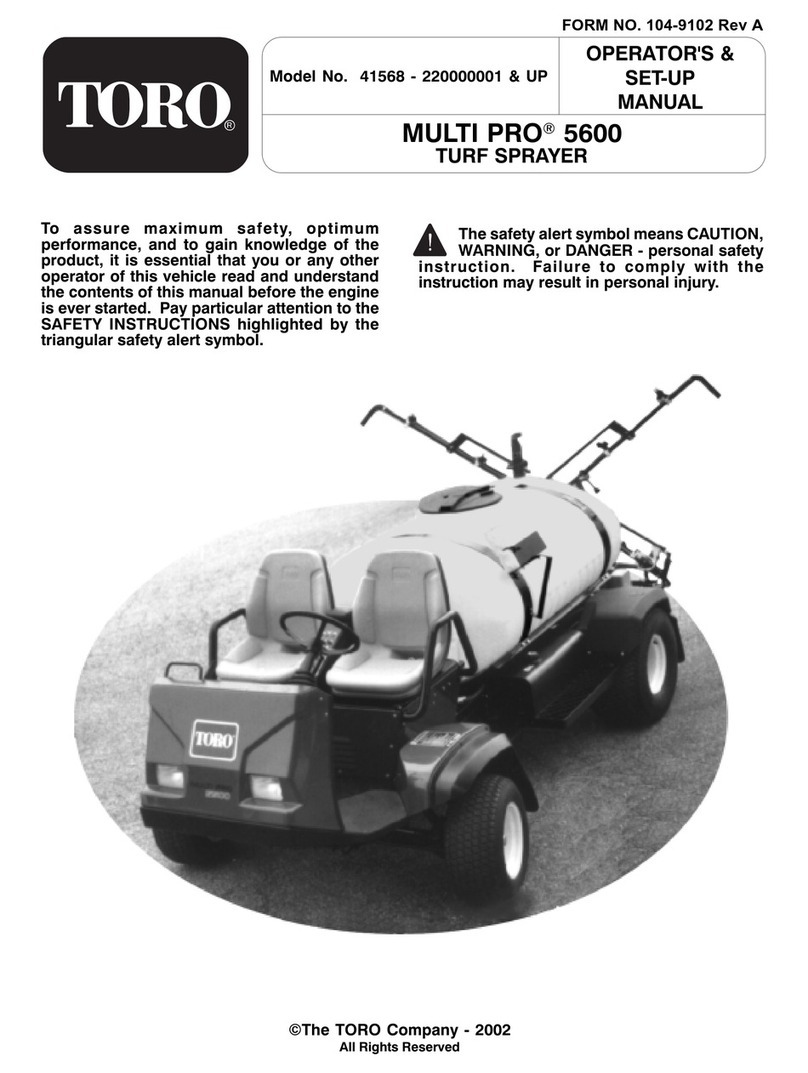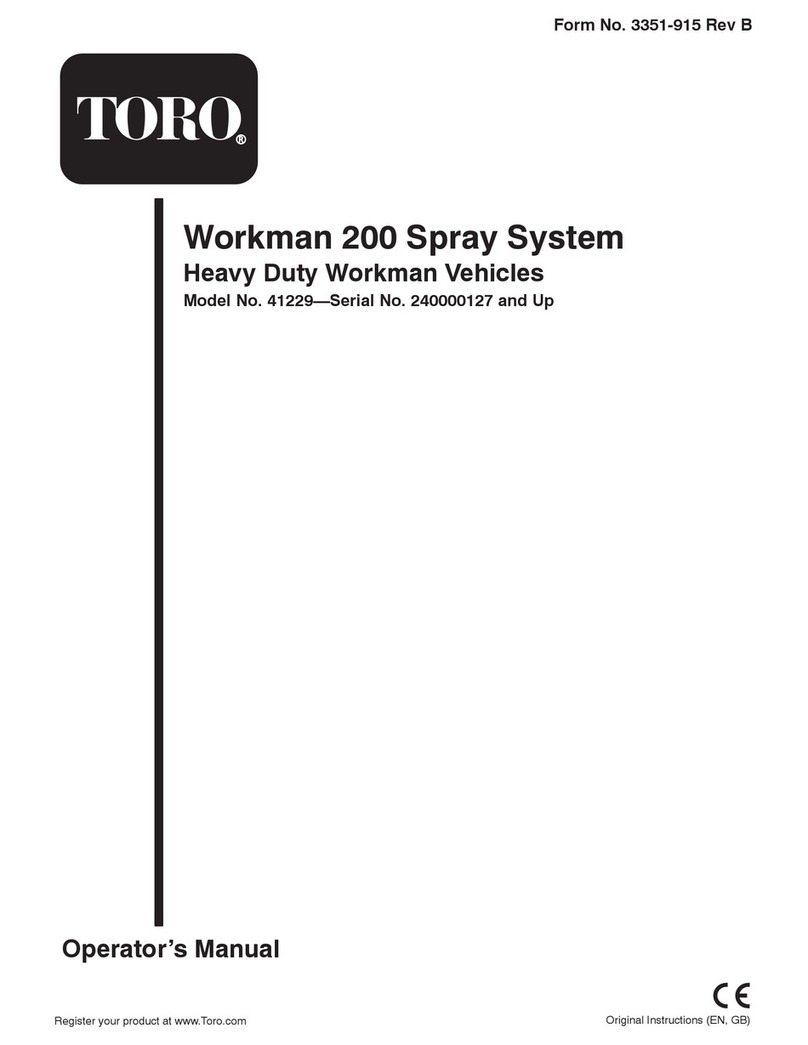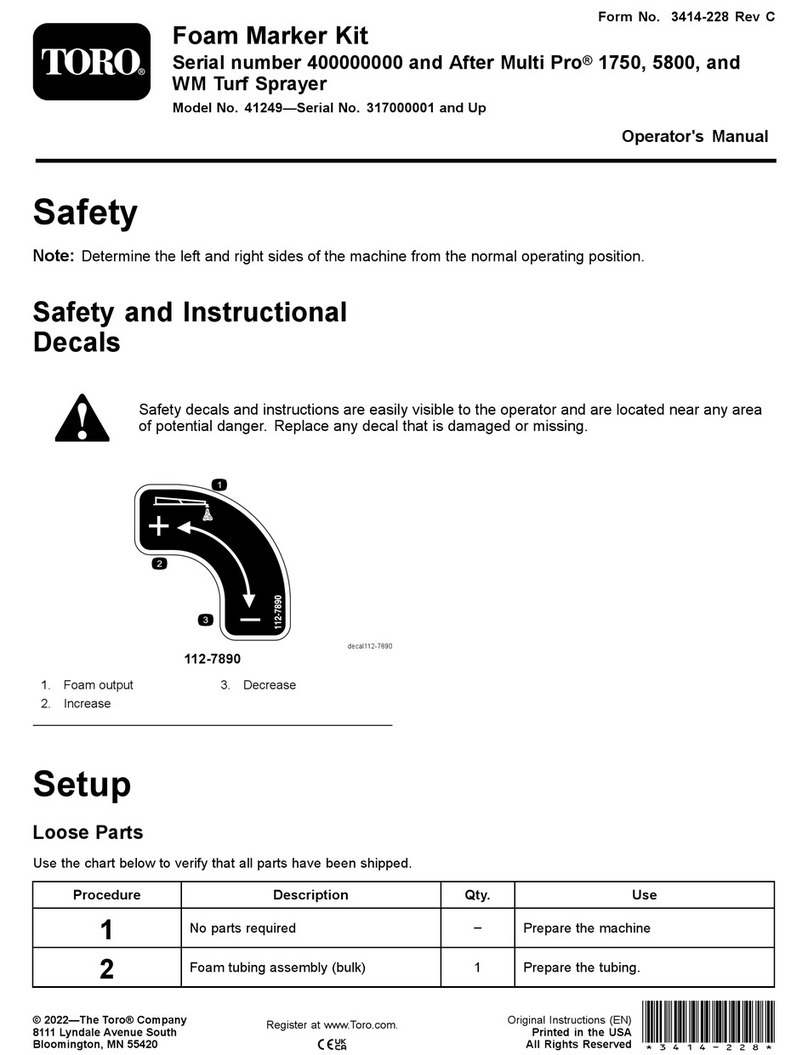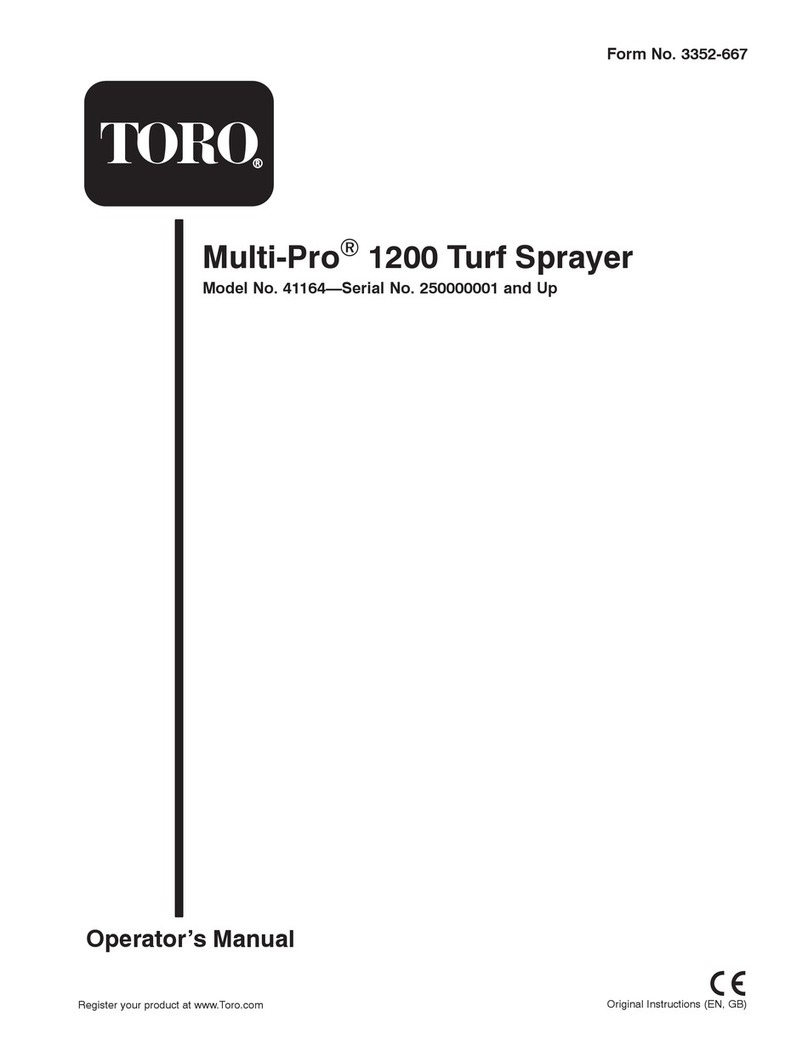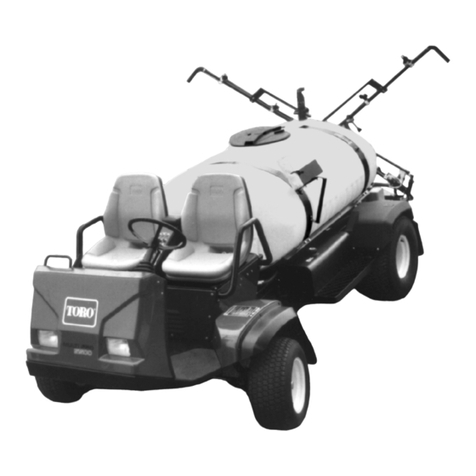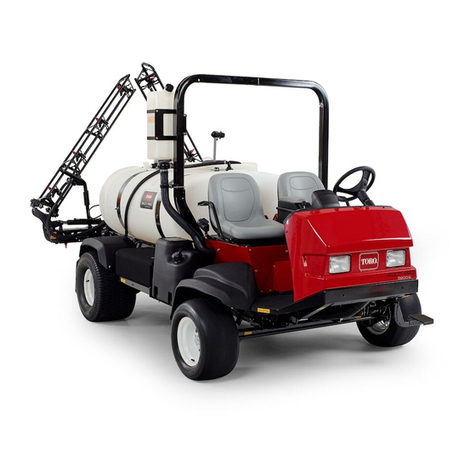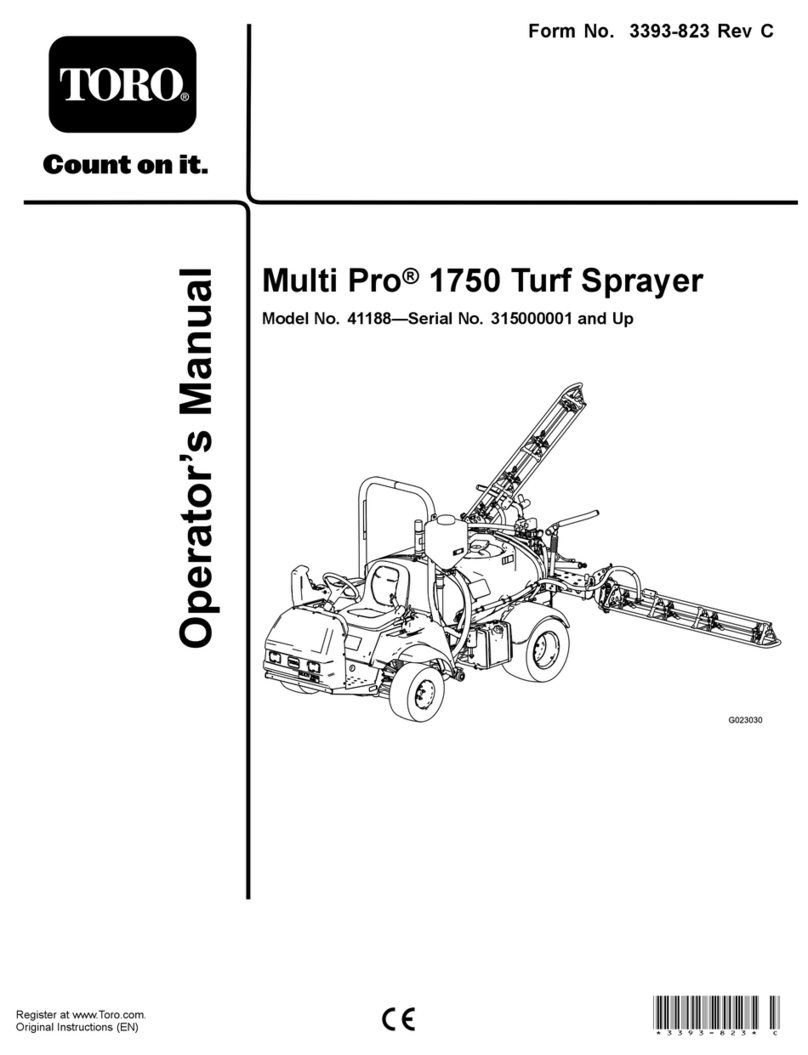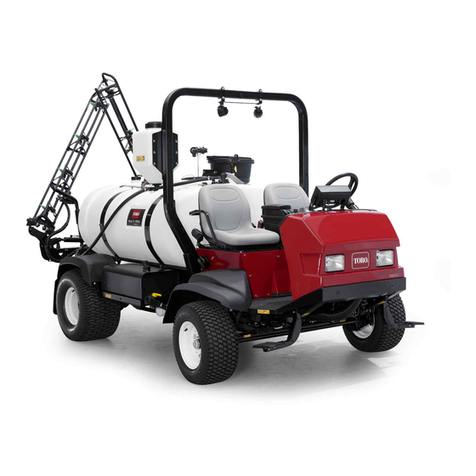
2
To assure maximum safety, optimum
performance, and to gain knowledge of the
product, it is essential that you or any other
operator of this Vehicle read and understand
the contents of this manual before the engine
is ever started. Pay particular attention to the
SAFETY INSTRUCTIONS highlighted by the
triangular safety alert symbol.
The safety alert symbol means
CAUTION, WARNING or DANGER -
personal safety instruction. Failure to comply
with the instruction may result in personal
injury.
Keep this Operators Manual and the Engine Manual in the plastic tube on the side of the Tank Frame.
It is very important that all persons operating this equipment have easy access to these instructions at all
times!
Carefully read and follow the set-up instructions that are provided with this equipment . The installation
of accessories on the TORO Skid Frame, other than those designated and sold for that express purpose
by TORO, may adversely affect the performance and safety characteristics of this equipment.
SAFETY INSTRUCTIONS
RECOGNIZE SAFETY INFORMATION
This safety-alert symbol is used to call
attention to a dangerous situation, which
could result in serious injury or death to the
operator or a bystander.
Safety, mechanical and some general information
in this manual are emphasized. DANGER,
WARNING and CAUTION identify safety
messages. Whenever the triangular safety symbol
appears, it is followed by a safety message that
must be read and understood. For more details
concerning safety, read the Safety Instructions on
this page and page 2. IMPORTANT identifies
special mechanical information and NOTE
identifies general information worthy of special
attention.
These instructions are provided as a guide for the
safe operation and maintenance of this equipment.
However, the operators personal safety, as well
as those persons in the work area, will depend on
the careful actions and good judgement of the
operator. To reduce the potential for injury or
death, comply with the following safety
instructions.
BEFORE OPERATING:
1. Operate this machine only after reading and
understanding the contents of this manual. A
replacement manual is available by sending
complete model and serial number to: Hahn
Equipment Co., a subsidiary of The Toro Company,
1625 N. Garvin, Evansville, IN 47711.
2. Learn how to operate the Sprayer and how to
use the controls properly. DO NOT let anyone
operate this equipment without first receiving
thorough instructions.
3. Keep all shields, safety devices and decals in
place. If a shield, safety device or decal is
malfunctioning, illegible or damaged, repair or
replace it before operating the machine.
4. Chemicals can injure persons, animals, plants,
soils or other property. To eliminate environmental
damage and personal injury:
A. Obtain proper training before using or
handling chemicals.
B. Select the proper chemical for the job.
C. Follow manufacturers instructions on
chemical container labels. Apply and handle
chemicals as recommended.
D. Handle and apply chemicals with care.
Wear goggles and other necessary protective
equipment. Handle chemicals in well
ventilated areas. Never smoke while handling
chemicals.
E. Properly dispose of chemical container and
unused chemicals.
4. To be sure of optimum performance and safety,
always purchase genuine TORO replacement
parts and accessories. Replacement parts and
accessories made by other manufacturers could
be dangerous. Altering the Skid Sprayer in any
manner may affect the Skid Sprayer's operation,
performance, durability or its use may result in
injury or death. Such use could void the product
warranty of the Toro Company.
5. This equipment should not be modified without
The Toro Companys authorization. Direct any
inquiries to:
Hahn Equipment Co.
1625 N. Garvin
Evansville, IN 47711


